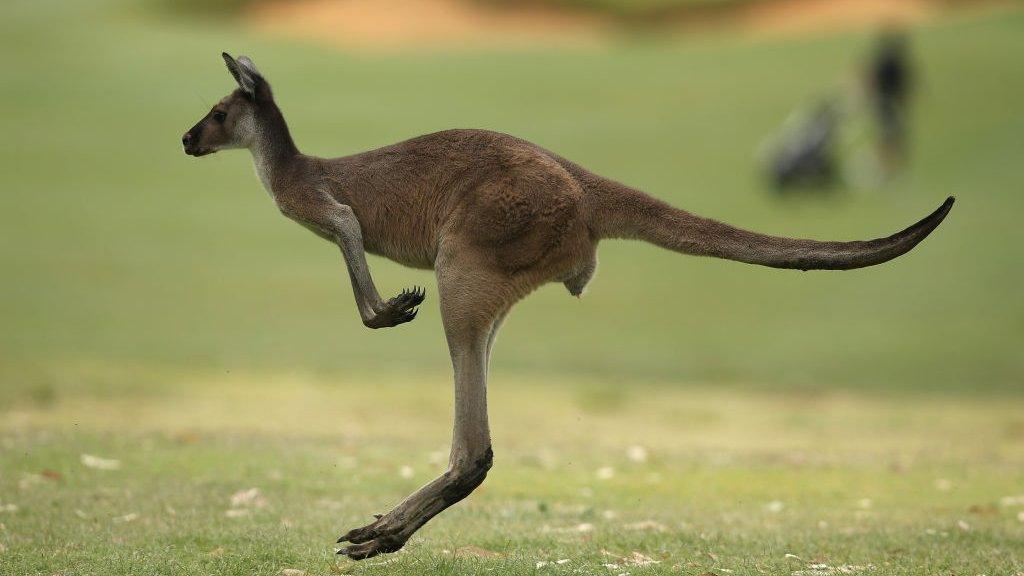National Trust sites become wildlife hangouts during lockdown
- Published
- comments
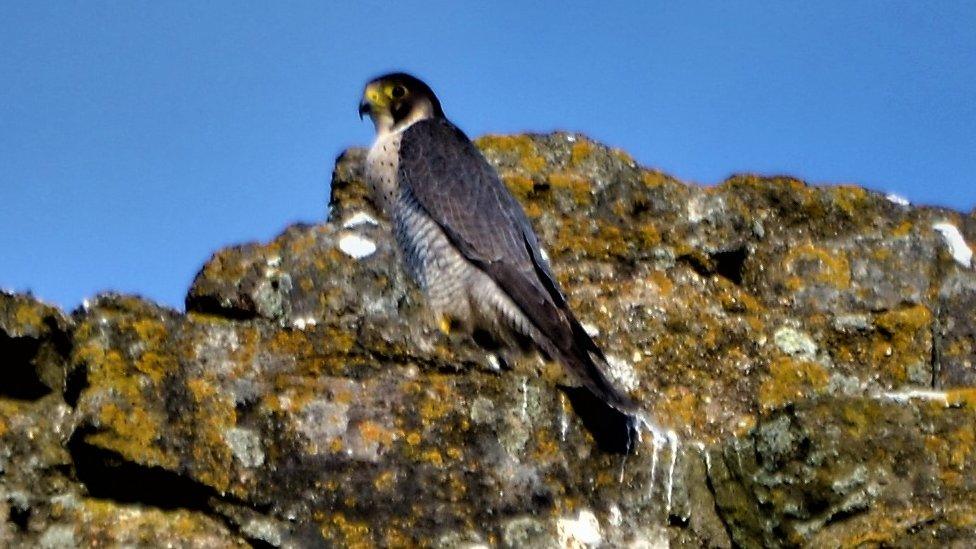
A peregrine making itself at home at Corfe Castle, Dorset
While we've been staying home to help stop the spread of coronavirus, wild animals have been coming out in their droves to take advantage of some of our favourite historical tourist spots.
Since the National Trust closed its historical houses, castles, parks and gardens in light of the pandemic, rangers and gardeners have been reporting that wildlife has been returning to visit - some for the first time in decades - in the most unusual of places.
Peregrine falcons have returned to nest on the ruins of Corfe Castle in Dorset for the first time in 20 years.
David Brown, ecologist at Corfe Castle, said: "With the site the quietest it has ever been, the great curtain walls are an ideal spot for these powerful birds, which look for isolated and inaccessible places to build a nest."
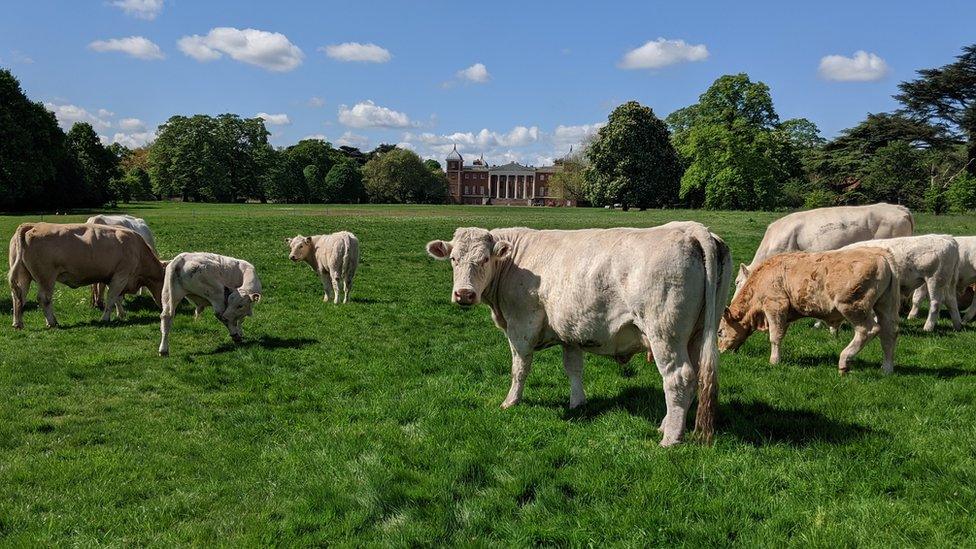
"We're moo-ving in" - cows make themselves at home on the lawn at Osterley Park and House in London
Herds of cows have been roaming the lawns at Georgian country estate, Osterley Park and House in West London, undisturbed by visiting crowds.
Hares, stoats and weasels have taken a trip from the surrounding woodland to explore the normally busy gardens of Plas yn Rhiw manor house, northwest Wales.
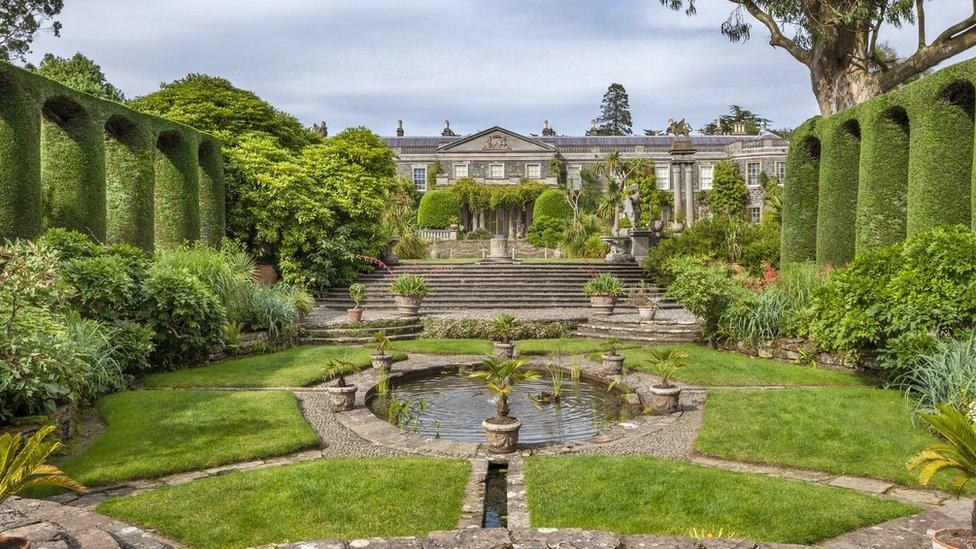
Mount Stewart's famous house and gardens in County Down are deserted
Badger cubs have been caught on camera exploring Mount Stewart estate in County Down, Northern Ireland by daylight and a pipistrelle bat has been recorded making itself at home in a deserted Lake District car park.
Ben McCarthy, head of nature conservation at the National Trust, said: "It has only been eight weeks but wildlife seems to be enjoying the breathing space."While many of the National Trust properties are still closed, some sites are reopening. The charity had asked that people be careful not to disturb wildlife that has made itself at home in new areas during the lockdown.
- Published21 November 2019
- Published10 April 2019

- Published16 April 2020

- Published29 November 2018
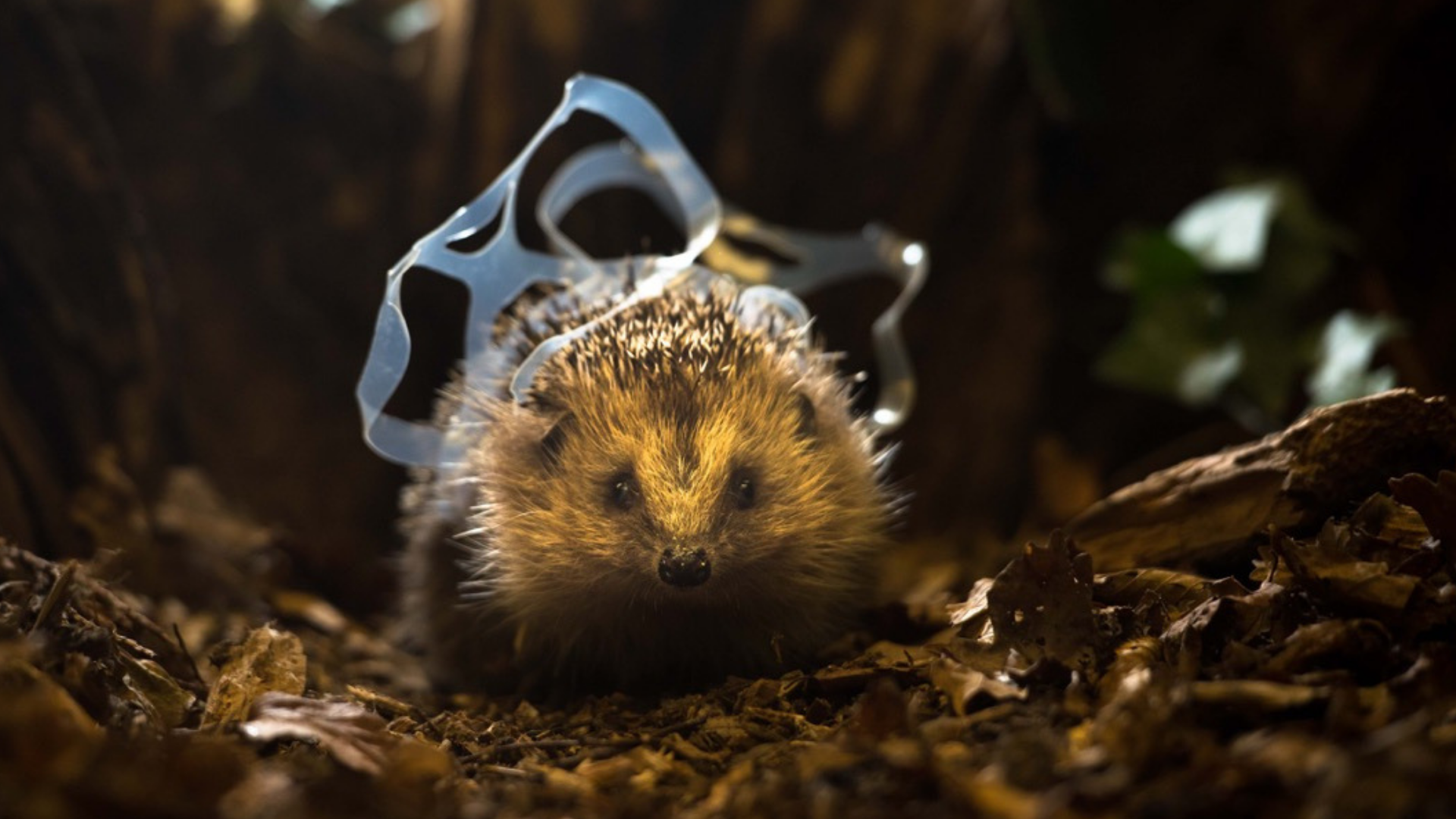
- Published27 March 2021
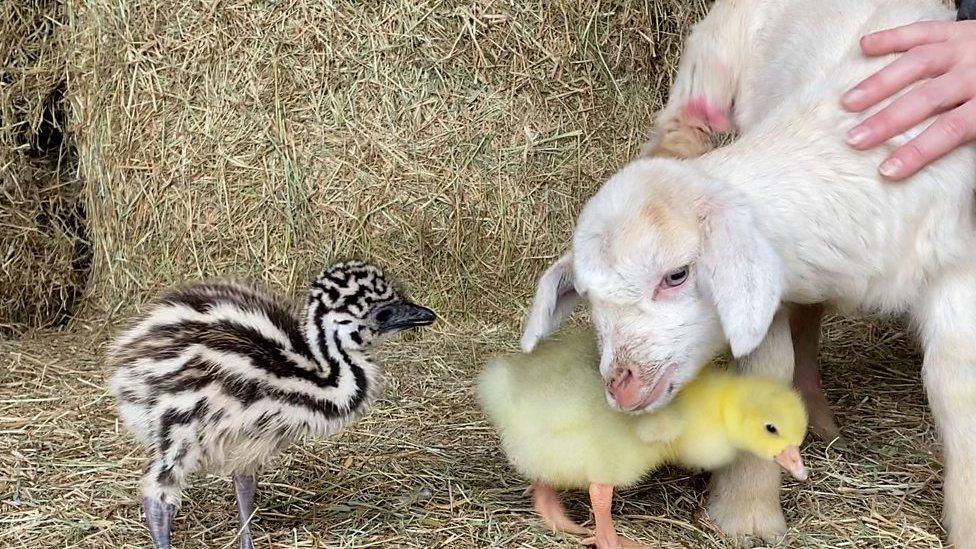
- Published20 May 2020
